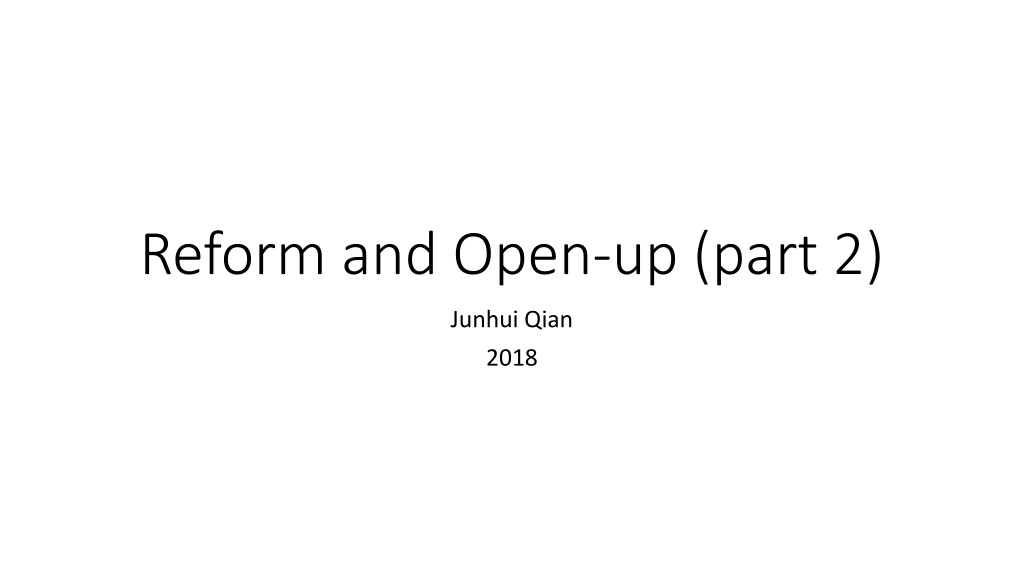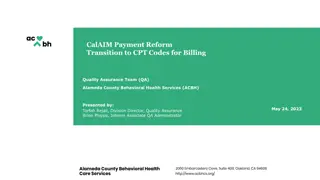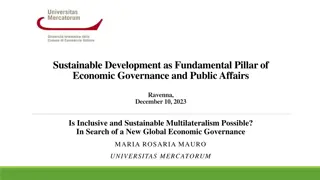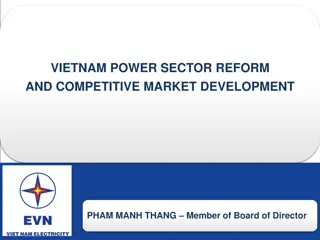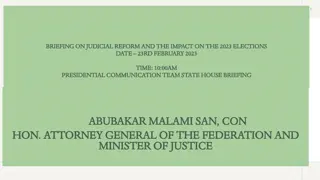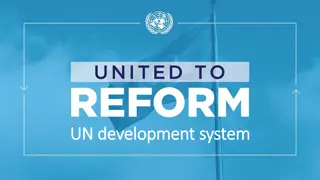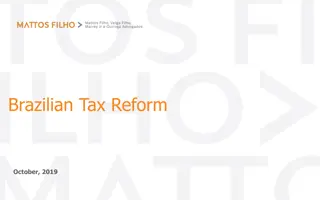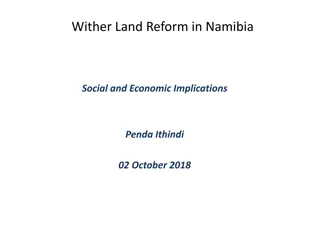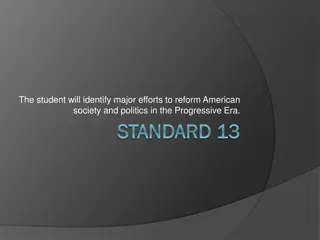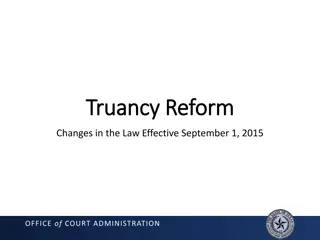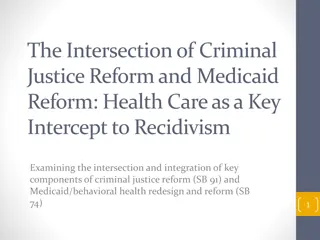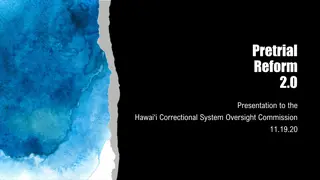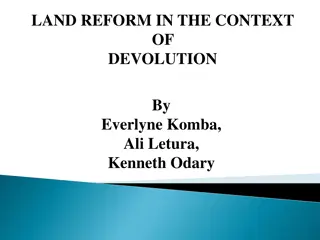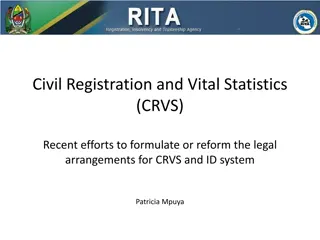Reform & Open-up: Junhui Qian's 2018 Perspectives
This content discusses the reforms in China in the 1990s focusing on Township and Village Enterprises (TVEs) and State-Owned Enterprises (SOEs). It delves into the challenges, debt issues, and the rise of Joint-Stock Cooperatives (JSC) in that period. The reforms, achievements, and remaining problems are analyzed with a detailed outline. Various factors driving the reforms and the impacts on different types of enterprises are explored, shedding light on the complexities of the economic transformation during that time.
Download Presentation

Please find below an Image/Link to download the presentation.
The content on the website is provided AS IS for your information and personal use only. It may not be sold, licensed, or shared on other websites without obtaining consent from the author.If you encounter any issues during the download, it is possible that the publisher has removed the file from their server.
You are allowed to download the files provided on this website for personal or commercial use, subject to the condition that they are used lawfully. All files are the property of their respective owners.
The content on the website is provided AS IS for your information and personal use only. It may not be sold, licensed, or shared on other websites without obtaining consent from the author.
E N D
Presentation Transcript
Reform and Open-up (part 2) Junhui Qian 2018
Outline The reform of TVE s The reform of SOE s Small and medium-sized Large SOE s
Questions What drove the reforms of TVE s and SOE s in 1990s? How were the reforms carried out for different types of enterprises? What did these reforms achieve? What problems remained?
Small and Medium-sized Enterprises (SME) in China Rural Township and Village Enterprises (TVE) Household and private enterprises Urban Urban collectives Urban household and private enterprises Other ownerships (mainly joint-ventures) Since early 1970s, the county and city governments have taken control of all small and a large proportion of medium-sized SOE s.
The Challenges to TVEs in 1990s The market conditions became less favorable to TVEs. The expansion of TVEs led to mechanism degeneration. The objectives of community government were in conflict with those of a profit-maximizing enterprise. Corruption among community officials and TVE managers were growing. TVEs as purses of the community government TVE as an ownerless asset. Runaway debt
Debt-Asset Ratio for Different types of Enterprises
Why There Was So Much Debt? Market competition intensified and profit margins for TVEs were eroded. Investment relied more on debt than internal saving. Expansion of community conglomerates made it more capable to guarantee more loans for TVEs. Individual TVE had the incentive to acquire more loans, knowing the community would bail it out if it could not repay the loan ( soft- budget-constraint problem ).
How JSC works Among the diverse forms of TVE ownership restructuring, the dominant one is the JSC. Managers and employees own a majority of the total share of the firm. The local government may hold a large part of shares in the name of community citizens. In addition to the shares held by the insiders and local government, there usually exist some (or even large) shares of outside equity which carry one vote per share. A representative form of governance is usually employed based on "one- person-one-vote" or "one-share-one-vote" or a combination of both voting principles.
Inter-Jurisdictional Competition as a Driver for Ownership Restructuring Since local officials promotion were connected with the economic performance of his jurisdiction, there were fierce competitions across provinces, cities, counties, and rural communities (i.e. township and villages) The competition induced local government to provide a hospitable environment for attracting investment and to a lesser degree, labor. The competition induced the promotion of markets, the experimentation of reform initiatives, and the emulation of good practices.
What JSC Achieved Reduced debt/asset ratio by 10 percentage points in average. It is widely reported that JSCs performance improved significantly, contributing to the continued miracle of TVEs.
Outline The reform of TVE s The reform of SOE s Small and medium-sized Large SOE s The opening-up Industrialization and urbanization
Phases of SOE Reform 1956-1978: Decentralization ( ) 1979-1982: Autonomous management ( ) 1983-1992: Contract responsibility system ( ) 1993-2003: Ownership restructuring ( ) 2004- : Management of capital ( )
The Self-Defeating SOE reforms of 1979-1992 The supply of energy and materials were rigid. Non-state entry was minimal. The import of energy and materials was also tightly controlled. Whenever an SOE reform was pushed forward (autonomous management, contract responsibility, etc.), production was stimulated, driving up prices of energy and materials. Inflation followed and became uncontrollable. So did corruption become more apparent. The reform was deemed a failure.
The Soft-Budget Constraint Problem A soft budget constraint is said to exist whenever a loss-making company continues to receive financing. To give more discipline to enterprise managers, grants gave way to bank loans ( ). However, due to the soft-budget constraint problem, bank loans soared.
Why Were SME-SOEs Prone to Failure? Often in competitive industries. Too small to enjoy economy of scale. Too bureaucratic to enjoy the flexibility that often comes with smallness. As a result, local governments had every incentive to get rid of them.
Grasping the Large and Letting the Small Go The Company Law of 1994 paved way for the diversification of ownership of the SOE s, including privatization. The 15thCommunist Party Congress (Sep 1997): Grasping the large and letting the small go. The large were often controlled by the central government, while the small were often in control of local governments. The large were (and are) often protected by entry barriers (real or regulatory), while the small were often subject to market competition.
Governance Reform Objectives: 1. (Incentive) Turn the SOE s from socialist work units into profit maximizing companies. (Constraint) Make the management responsible for the solvency risk. Practices: 1. Separation of the enterprise from the government. 2. Introduce competition by breaking monopolies. 3. Listing As a whole ( ) Essential parts ( ) 2.
Public listing of SOEs Almost all national champions (telecoms, transport, energy and finance) have been listed in stock exchanges in Shanghai, Shenzhen, Hong Kong, and New York. The typical practice is: (i) form a limited corporation for asset injection and eventual listing; (ii) invite strategic investment in the corporation from big-name western investors such as Goldman Sachs, Warren Buffet, and the likes; (iii) and IPO simultaneously or sequentially at various stock exchanges. Many smaller SOE s controlled by local governments have also been listed in Shanghai, Shenzhen, and Hong Kong. A listed company not only obtains an additional source of financing, but also introduces external monitoring of the management.
Case Study: The Reform of Sinopec (I) About Sinopec: Sinopec Group is one of the big two oil companies in China and is the world's fifth biggest company by revenue. Its business include oil and gas exploration, refining, and marketing; production and sales of petrochemicals, chemical fibers, chemical fertilizers, and other chemical products; storage and pipeline transportation of crude oil and natural gas; import, export and import/export agency business of crude oil, natural gas, refined oil products, petrochemicals, and other chemicals. In 2009, it was ranked 9th by Fortune Global 500, becoming the first Chinese corporation to make the top ten and in 2010 it was ranked 7th.
Case Study: The Reform of Sinopec (II) China Petrochemical Corporation (Sinopec Group), the parent of the listed Sinopec Corp., is established in July 1998 on the basis of the former China Petrochemical Ministry. Strategic investors of Sinopec include BP, Exxon Mobile, etc. The Sinopec Corp. issued H-shares and A-shares at overseas and home respectively in October 2000 and August 2001, respectively, and was listed on stock markets in Hong Kong, New York, London, and Shanghai. The total number of shares of Sinopec Corp. was 86.7 billion, in which Sinopec Group owns 75.84%, international investors own 19.35%, and domestic investors own 4.81%. In 2014, Sinopec initiated the so-called mixed-ownership reform. It plans to sell more shares to strategic investors in the private sector.
Other Measures to Harden the Soft-Budget Constraints Banking reform turned state banks into commercial banks. Tax reform weakened the link between SOE s and their bureaucratic superiors. Social security reform and housing reform helped reduce the bargaining power of SOE s.
The Achievement of SOE Reform After downsizing, splitting, and restructuring, many loss-making large SOE became profitable again. The downsizing of SOE released redundant labor for non-state enterprises. The associated housing reform helped improve the allocation efficiency of labor.
What Problem Remained? The state share remains too large No proper monitoring of SOEs No market discipline Incomplete separation between the enterprise and the government Key personnel's are appointed, evaluated, and promoted as government officials. SOE enjoys implicit guarantee from the government. Lack of incentives for enterprise management to generate profit and dividend Strong incentive to build empire Weak incentive to control cost
